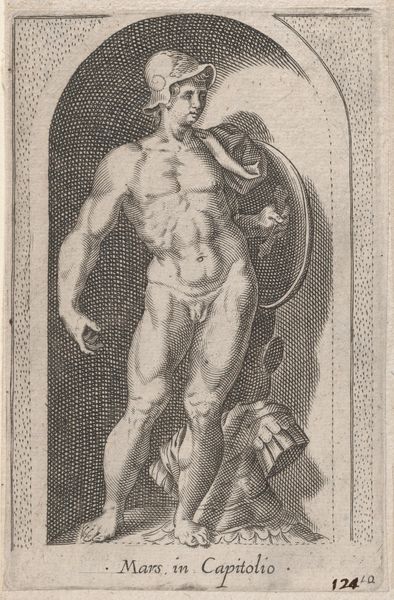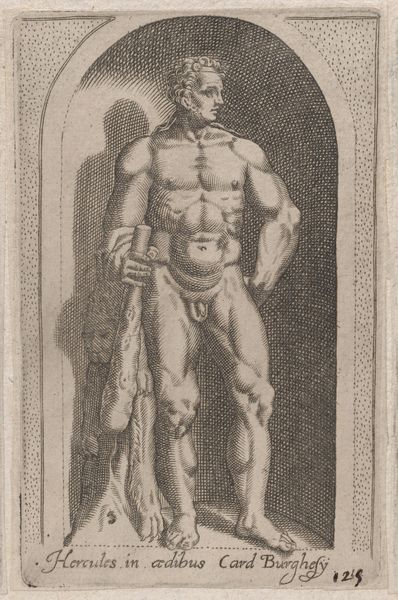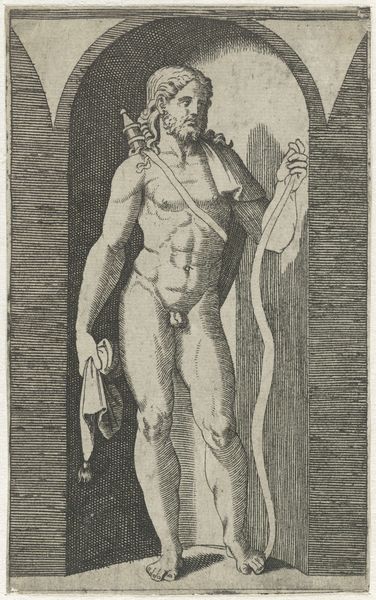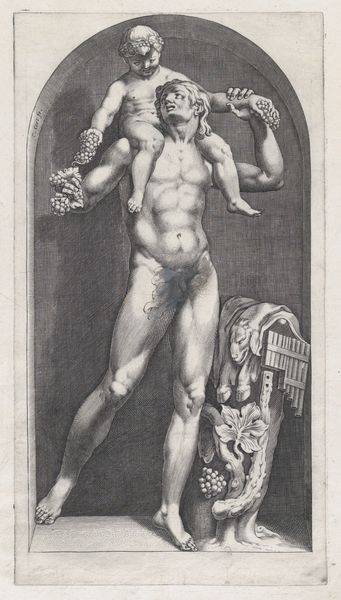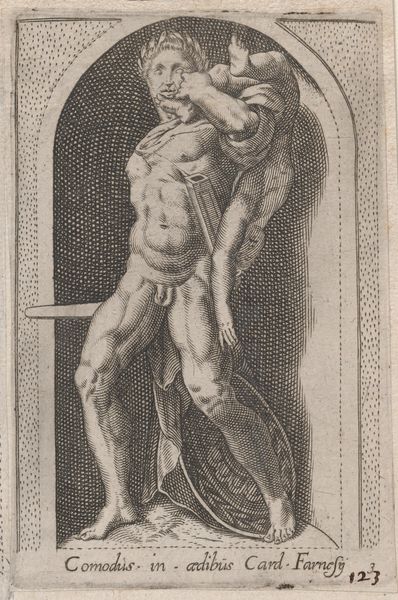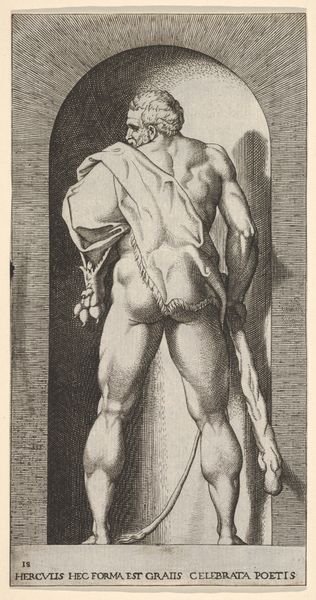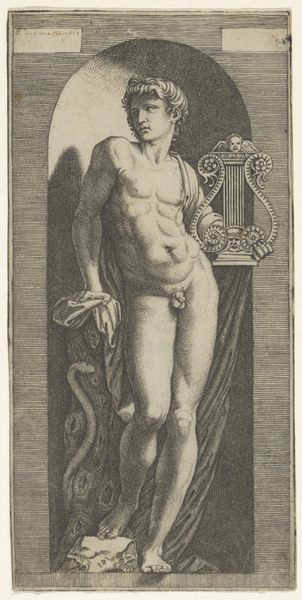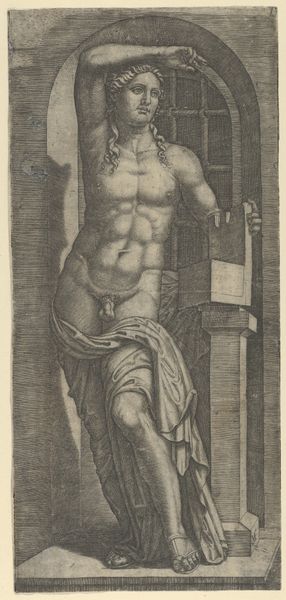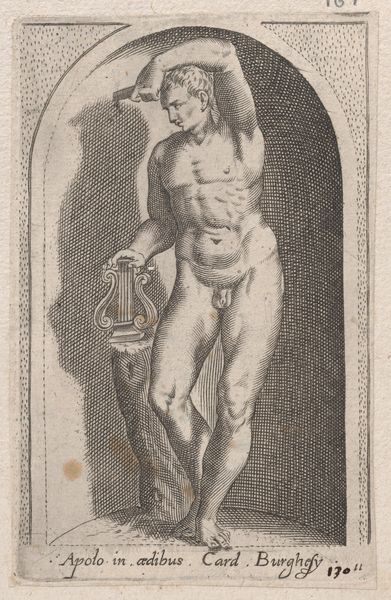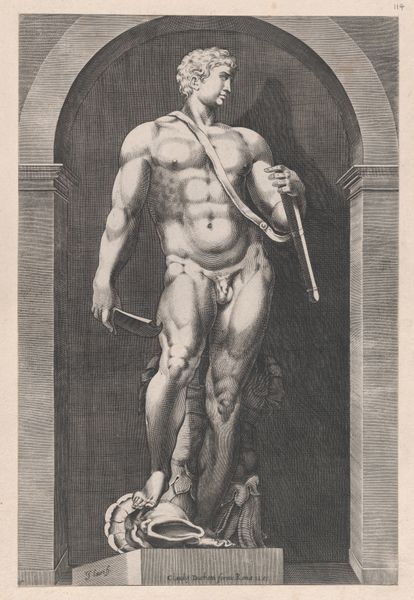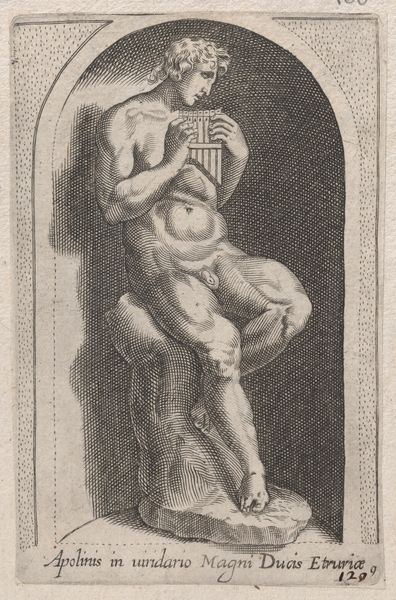
Speculum Romanae Magnificentiae: Jupiter (Jupiter in aedibus Card. Burghesij) 1530 - 1580
0:00
0:00
drawing, print, engraving
#
portrait
#
drawing
#
allegory
# print
#
classical-realism
#
figuration
#
mythology
#
italian-renaissance
#
nude
#
engraving
Dimensions: sheet: 16 5/8 x 13 1/8 in. (42.3 x 33.3 cm) plate: 4 15/16 x 3 1/8 in. (12.5 x 8 cm)
Copyright: Public Domain
Editor: So, this engraving, "Speculum Romanae Magnificentiae: Jupiter" created sometime between 1530 and 1580, depicts a rather stern, muscular Jupiter with his eagle. The precision of the lines is striking for its time. I wonder, what elements jump out at you? Curator: The very act of producing a print like this in the 16th century speaks volumes about the burgeoning culture of information dissemination and the artistic labor involved. Consider the craftsman who meticulously carved the copperplate, replicating classical ideals for a growing market. Were they simply copying, or were they engaging in a form of early artistic appropriation, a commentary on the accessibility of power? Editor: That's fascinating! I hadn't considered the printmaking process as a form of labor and a means of disseminating ideas so widely. Curator: Exactly. This wasn't just about depicting Jupiter; it was about participation in, and shaping, cultural capital. The "Speculum Romanae Magnificentiae" aimed to inventory and circulate the grandeur of Rome. This specific print speaks to the material conditions that facilitated the Renaissance's obsession with classical antiquity. And it prompts us to ask: who owned these prints? How did the rising merchant class use them? How does it question power when classical references become products? Editor: So it is about power. What strikes me now is that making gods so available reshapes the power. I like the emphasis on the materials themselves— the plate, the ink, the paper, and the labour required to produce it—reveals more about its historical significance. Curator: Indeed! The materiality isn't simply a conduit for the image. It *is* the message in many ways. It shows the Renaissance's attempt to possess, consume, and ultimately reshape its classical heritage through its labor. Editor: It gives a whole new meaning to what these engravers were doing. Thank you, this was fascinating. Curator: My pleasure. Reflecting on the process reveals stories about consumption, labor, and societal ambition.
Comments
No comments
Be the first to comment and join the conversation on the ultimate creative platform.
